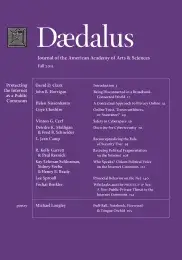Safety in Cyberspace
Safety in cyberspace continues to be an elusive objective. This essay explores various metaphors to aid thinking about the means by which safety might be increased. Notions such as cyber-fire-departments or cyber-police-departments as well as models drawn from public health scenarios are considered. The legal frameworks in which safety can be improved and international agreements adopted toward this end are briefly discussed. Users can also contribute to their own safety by adopting various practices that reduce vulnerability to cyber-infection and compromise.
The term cyberspace, first coined by novelist William Gibson1 in 1984, has been absorbed into daily language and extended through the prefixing of cyber- to an extraordinary number of words. The effect is to imbue ordinary terms with the mystery and otherworldliness of the Internet, World Wide Web, and other artifacts formed through the use of computers and their interconnection. As the Internet and its World Wide Web application have expanded in geographic scope and use, especially by the general public, we have witnessed the emergence of a wide range of practices in the online environment that mirror their counterparts in the physical world. Of course, the Internet itself is realized in a physical way, but it also forms the basis for a virtual environment fashioned of bits rather than atoms. It is this artificial environment that Gibson labeled “cyberspace.”
To distinguish various activities that entail the use of computers from those that involve the physical world, it has become common to label the computer-oriented activities as “cyber-activities” or, sometimes, “e-activities” or “e-objects.” We speak of “email” or “e-books” and “e-commerce” as if they occupy a place in a virtual universe. We use our commonplace, real-world activities as models for their cyberspace counterparts. In many respects, these models help us appreciate the significance and utility of the networked, online equivalents. Thus, “digital signature” is used to refer to a way of cryptographically “signing” a digital document, giving the sense that the digital signature is the equivalent of one rendered with pen and ink or other marking instrument.
. . .
